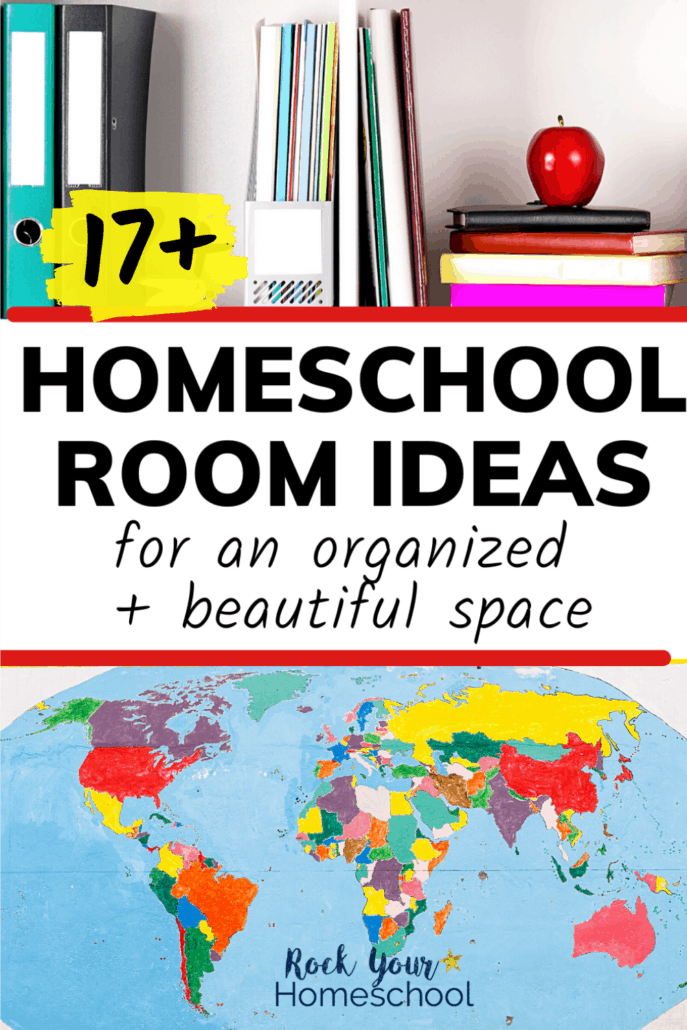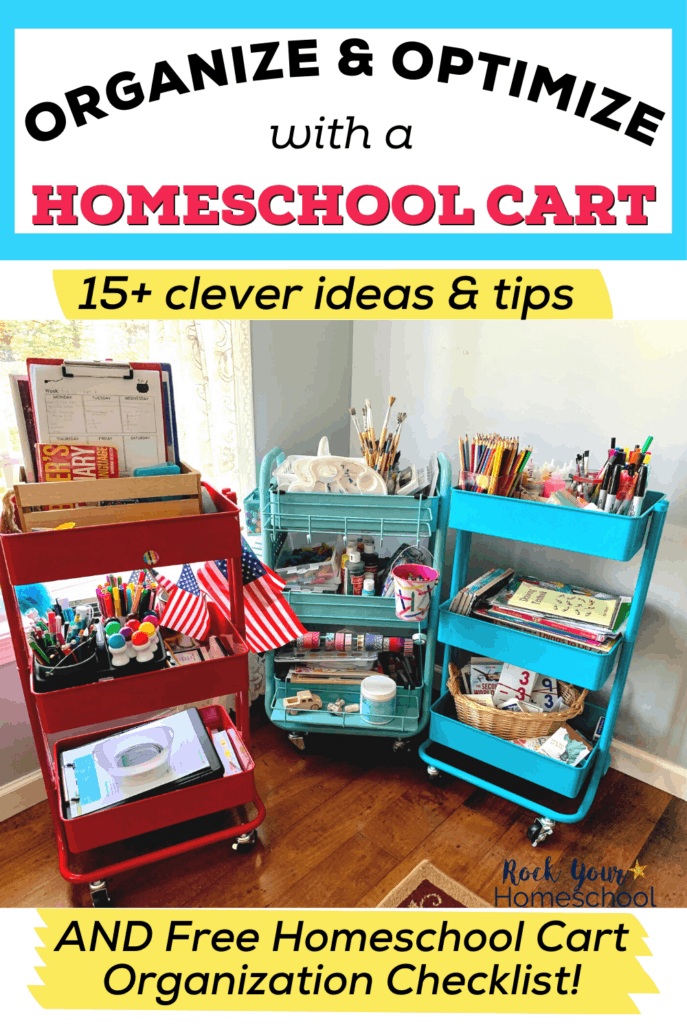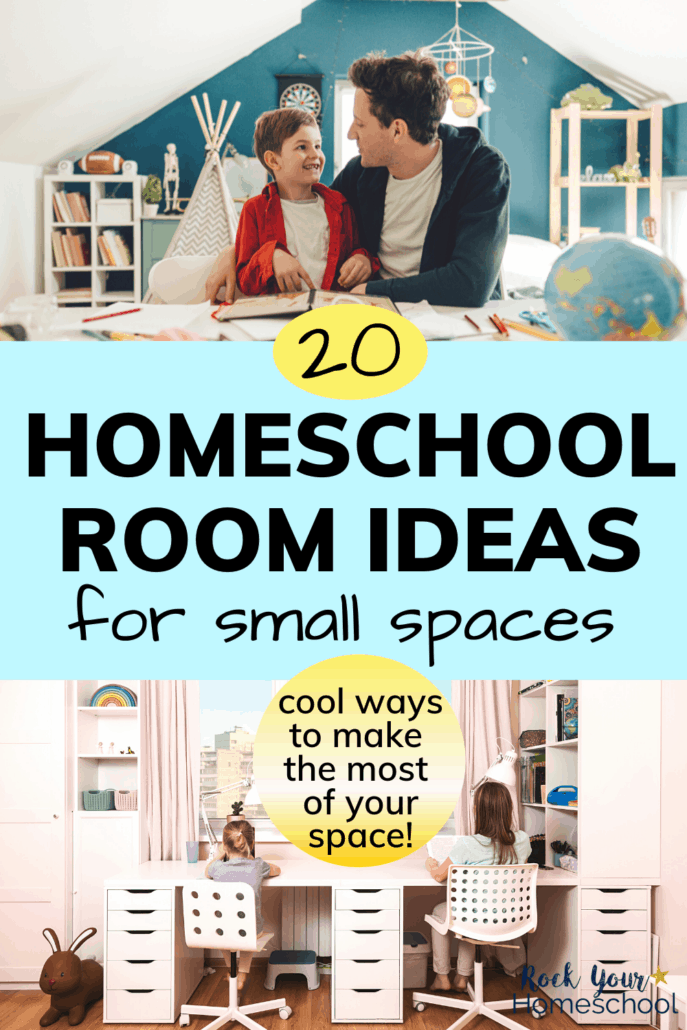10+ Intelligent Ways to Easily Setting Up a Homeschool Classroom
This post may contain affiliate links. Please read my disclosure statement. Thanks for visiting!
Setting up a homeschool classroom might seem intimidating at first, especially if you're new to homeschooling.
With the right strategy and these creative ideas, you can transform any space into an engaging learning environment.

Make Your Homeschool Classroom Work for You
Whether you have a dedicated room or just a small space (like a corner in your living room), this guide will help you design an area that facilitates effective homeschooling.
If you're working with limited space, no worries! There are a ton of things that you can do to maximize your use of that area.
Multi-functional furniture, like foldable desks or storage ottomans, can be amazing. A room divider can turn a segment of a larger room into a dedicated study space. Wall-mounted shelves can free up floor space while keeping resources at arm's length.
Oh, and you can absolutely repurpose a room of your home to function in multiple ways. For example, in our home, we've transformed our dining room area into a homeschool space. We love this set-up because it's so close to our kitchen (my boys love second breakfast and snacks!) and provides enough wiggle room for all of us to comfortably fit and learn.

A Simple Guide to Setting Up a Homeschool Classroom
The good news is that you can find so many cool ideas for creating a homeschool area that you can enjoy and works for your family.
I've discovered that our needs for our homeschooling space have changed as our homeschool ages. That's why I decided to share these tips and inspiration for designing a homeschool room for where ever you are in your journey.
1. Choose the Right Location for Your Homeschool Classroom:
Location, location, location! Your first step is to decide where to set up your classroom.
Ideally, you want a quiet, well-lit space free from distractions. A spare bedroom, basement, or even a corner in the living room can work.
Remember, it doesn't have to be large – just functional.
- Assess Your Home Layout
Begin by taking a tour of your home with fresh eyes. Look for spaces you might have overlooked in the past. While a spare bedroom might be the obvious choice, perhaps there's an underutilized sunroom, a spacious hallway nook, or even an airy attic that could serve the purpose.
- Factors to Consider
Lighting: Natural light can significantly impact mood and concentration. A room with ample windows that let in daylight can be beneficial.
If natural light isn't abundant, ensure that the room has enough artificial lighting. Adjustable lights can be particularly useful, allowing you to change the brightness based on the activity or time of day.
Distractions: While you might be tempted to set up in a central location like the dining room, consider potential distractions. Will family members be walking through frequently? Is it close to the TV or the main door? You want a space where your child can focus without regular interruptions.
Acoustics: Some areas might be particularly noisy due to street sounds, household appliances, or chatty neighbors. Opt for a location where external noise is minimal OR invest in soundproofing solutions like heavy curtains, rugs, or even acoustic panels.
Space: While the classroom doesn't need to be expansive, it should be spacious enough to accommodate a desk or table, seating, storage, and some free movement.
Flexibility is key. The space should be adaptable for reading, writing, crafts, experiments, and even the occasional wiggle or stretch break.
Accessibility: If your child is younger or needs frequent supervision, you'll want the homeschooling space to be somewhere easily accessible to you while you go about other household tasks. Conversely, if you have an older student who thrives on independence, a more secluded spot might be better.
Ambiance: This might seem trivial, but the general vibe of the room matters. A basement might have space and quiet, but if it feels cold and unwelcoming, it might not be conducive to learning. Opt for a location that feels warm and inviting.
2. Create a Seating Plan:
Depending on your child’s age and learning style, consider various seating options. Traditional desks work great for some students, while others might prefer bean bag chairs, a standing desk, or a comfy couch. Having a mix can also be beneficial, giving them the option to switch based on the activity.
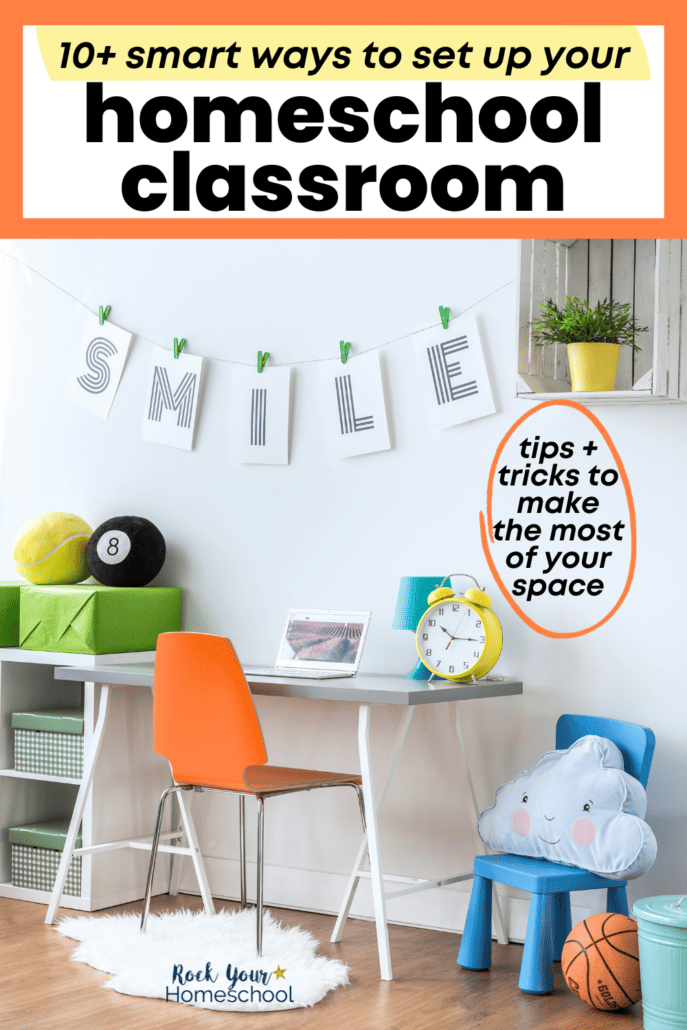
3. Organize with Storage Solutions:
A clutter-free space is a productive space!
Utilize bookshelves, storage bins, and organizers. Label everything, from subject folders to craft supplies. These actions not only keep things tidy but also teach your child the importance of organization.
Oh, and don't forget about rolling carts! These affordable tools have been awesome additions to our homeschool. Find out more about how we use our homeschool rolling carts and our free printable guide.
4. Lighting Matters:
Natural light is the best. Position the workspace near a window if possible. For those darker hours or gloomy days, invest in good-quality, soft white lighting to reduce eye strain.
5. Technology and Connectivity:
If your homeschooling relies on online resources, ensure you have a reliable computer and internet connection. Consider headphones for interactive lessons or for times when quiet is needed.
6. Decorate to Inspire:
Make the space exciting and inspiring. Hang educational posters, student artwork, or even a world map.
A bulletin board or cork board is great for showcasing achievements, important dates, or lesson plans. Personalize the space to reflect your child’s interests, making it a place they want to be in.
Since we're so close to our kitchen, I also use our refrigerator to showcase some of my boys' homeschool work.
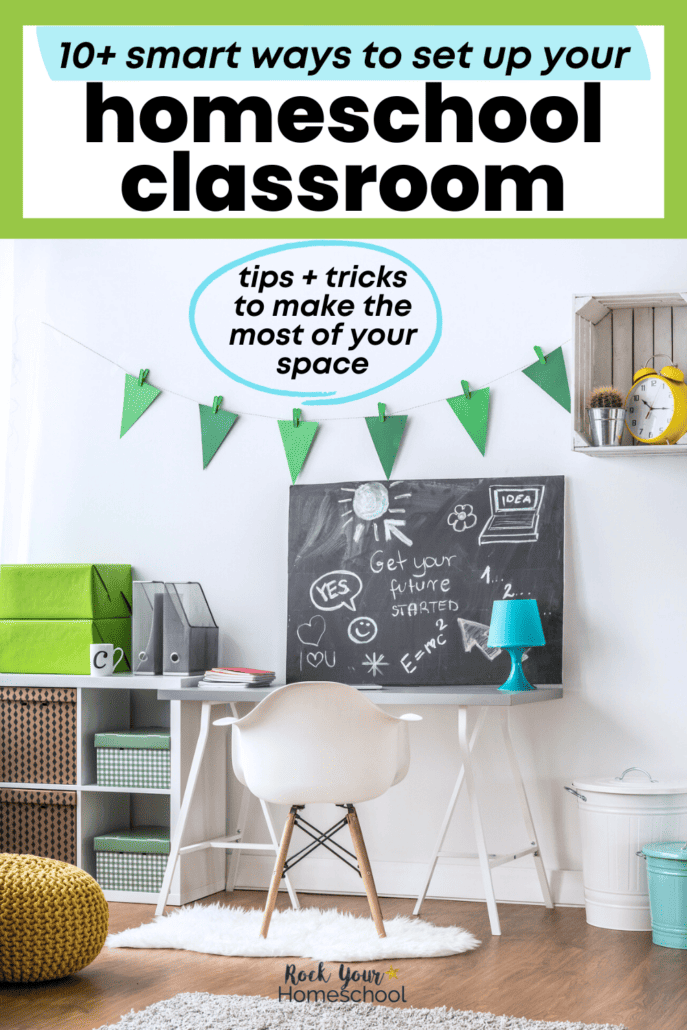
7. Hands-On Learning Stations:
Tactile learning can be super effective, especially for younger kids. Consider a science station with a microscope and slides or a math station with counting beads and blocks. Rotate these stations based on your curriculum to keep things fresh.
8. Create a Reading Nook:
Every classroom should have a reading corner!
Pile up some cushions, add a lamp, and make sure there’s a shelf or basket with age-appropriate books. It’ll become a favorite spot in no time.
Oh, and add our free printable reading scavenger hunt to encourage your kids to try different genres!
9. Set Ground Rules:
Just because it’s at home doesn't mean you shouldn’t have rules.
Set clear boundaries and expectations about behavior in the classroom. When the classroom is “open”, it’s time for learning and house rules apply.
10. Stay Flexible:
One beauty of homeschooling is flexibility. If something’s not working, change it!
If your child learns better on the porch or under a tree, that's okay. The goal is effective learning, not necessarily where it happens.

Important Homeschool Classroom Reminders
1. Remember That Every Family is Unique
Your homeschool classroom doesn't have to look like anyone else's. It should cater to the specific needs and dynamics of your family. While some families might need a rigorous, structured environment, others may thrive in a more relaxed setting.
2. Incorporate Input in Your Homeschool Classroom:
Involve your child in the setup and maintenance process. These actions give them a sense of ownership and pride in their learning space.
If they want a blue chair or a poster of their favorite animal, try to incorporate it. Their comfort and enthusiasm play a significant role in their learning journey.
Setting up a homeschool classroom is an adventure in creativity and customization. It provides an opportunity to craft an environment where your child (and you) can academically and personally thrive. With patience, flexibility, and a dash of fun, you can create a space that is both educational and inviting.
Happy homeschooling!

